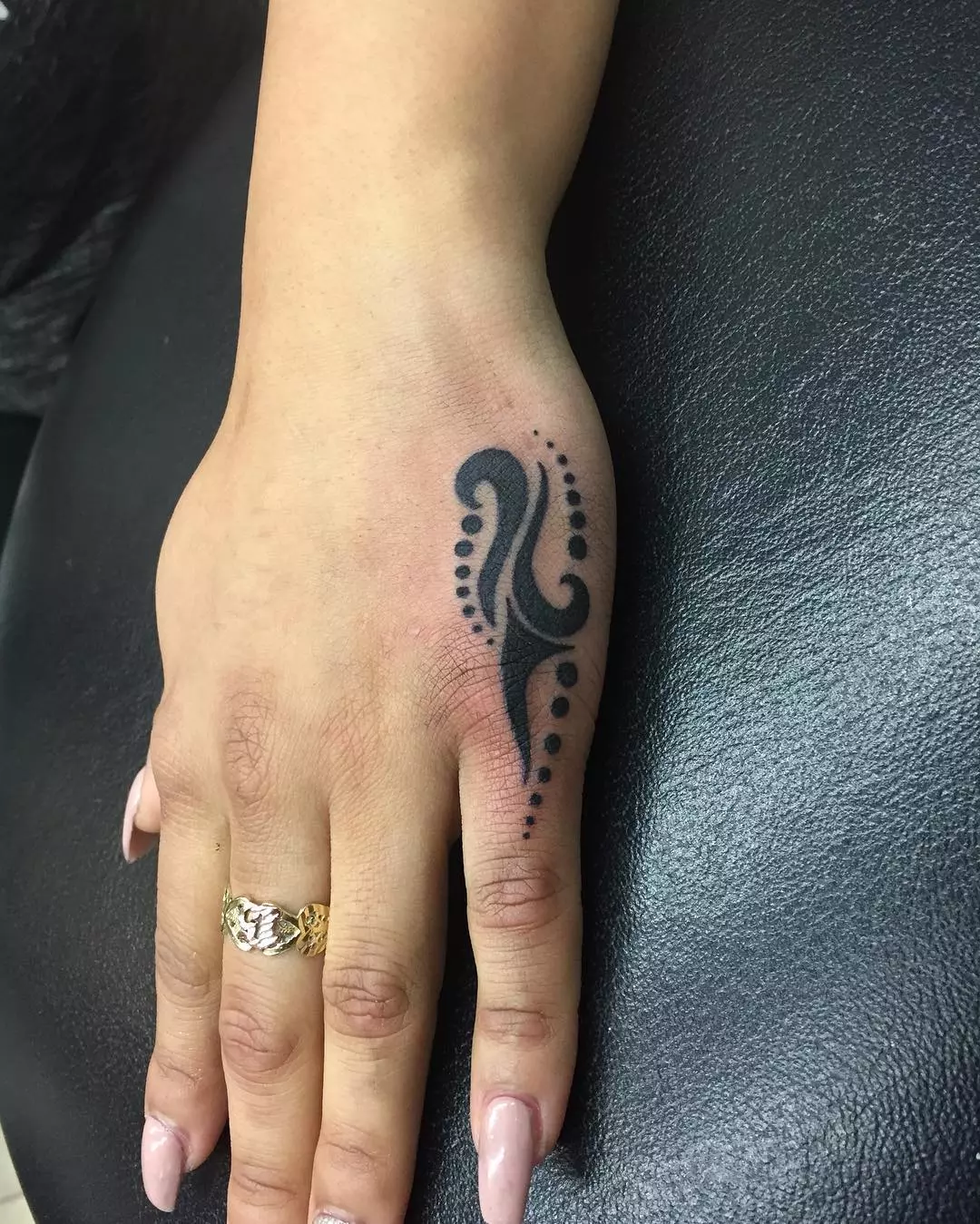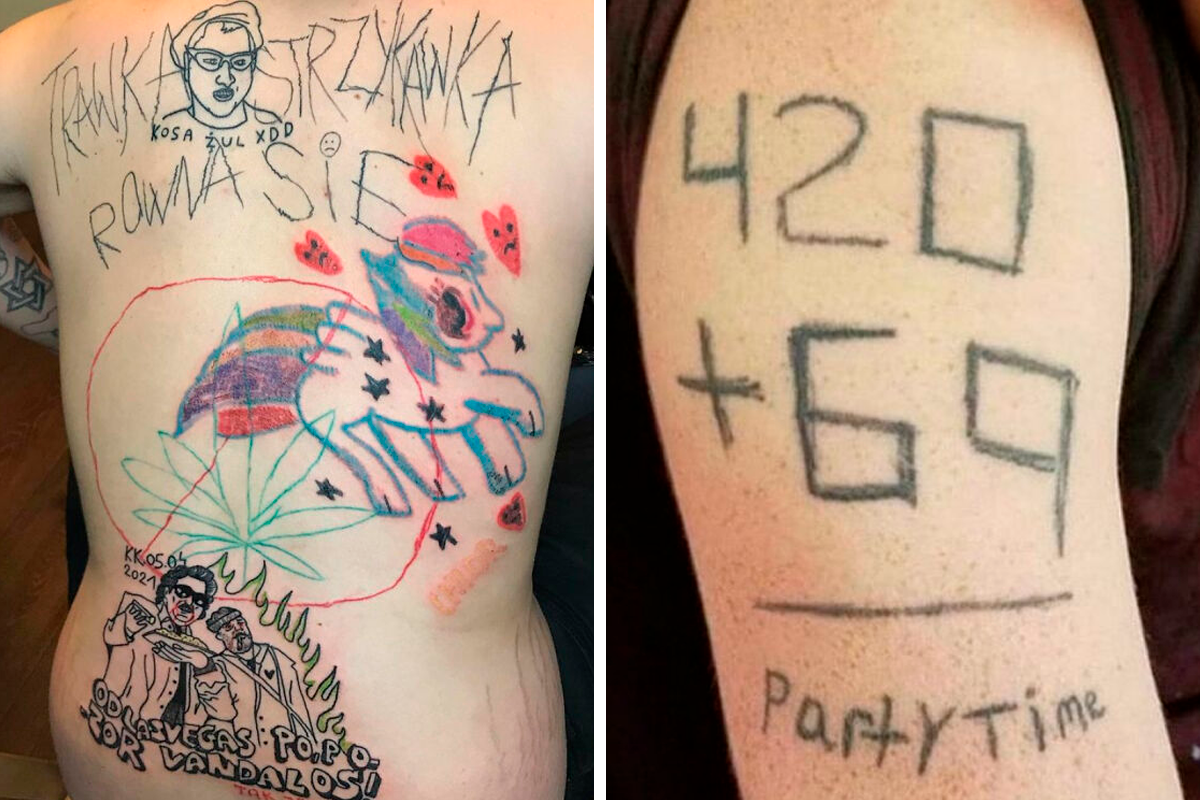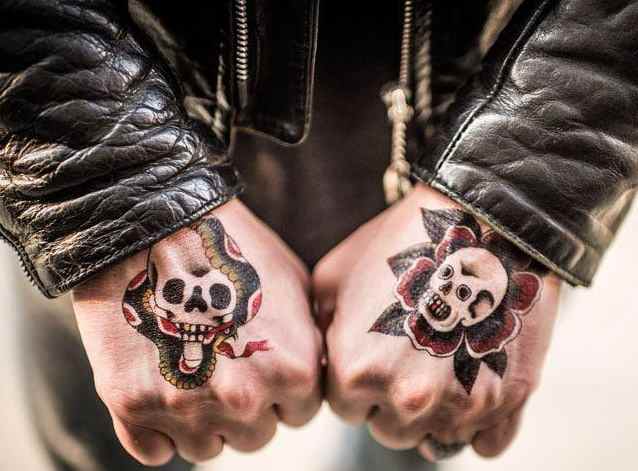
The Ankle Ink Agony: Decoding the Pain of a Small Ankle Tattoo
So, you’re dreaming of adorning your ankle with a delicate sprig of lavender, a minimalist geometric design, or perhaps a tiny, tenacious turtle? The vision is clear, the design is perfect, but a nagging question lingers: how much is this little piece of art going to hurt?
Let’s be honest, the fear of pain is a major hurdle for many aspiring tattoo enthusiasts. And the ankle, with its delicate skin and proximity to bone, often gets flagged as a particularly sensitive spot. But fear not, brave soul! We’re diving deep into the world of ankle tattoo pain, separating fact from fiction, and equipping you with the knowledge to make an informed decision.
1. The Anatomy of Ankle Pain: Why Does It Feel So Intense?
The ankle’s reputation for pain isn’t entirely unfounded. Several factors contribute to its sensitivity:
- Thin Skin: The skin covering the ankle bones is noticeably thinner than on other parts of the body, like the thigh or upper arm. This means the tattoo needle is closer to the bone and nerve endings, amplifying the sensation.
- Bony Proximity: The malleoli, those prominent knobs on either side of your ankle, are essentially bone covered by a thin layer of skin. Tattooing directly over these areas can feel like the needle is vibrating against the bone, which, understandably, isn’t a pleasant experience.
- Nerve Density: The ankle is laced with nerve endings, making it a highly sensitive area. These nerves transmit pain signals quickly and efficiently to the brain, contributing to the perceived intensity.
- Lack of Muscle and Fat: Unlike areas with more muscle and fat padding, the ankle offers little cushioning. This lack of buffer allows you to feel the needle more directly.
2. The Pain Spectrum: From Annoying Itch to Bone-Rattling Vibration
Okay, so the ankle can be sensitive. But what does that actually feel like? The pain experience is subjective, varying from person to person. However, common descriptions include:
- Scratching: Many people describe the initial sensation as similar to a cat scratch, a sharp, stinging feeling that gradually intensifies.
- Burning: As the tattoo progresses, the sensation can evolve into a burning feeling, as if the needle is repeatedly dragging across the skin.
- Vibration: When tattooing directly over bone, the sensation can feel like a buzzing or vibrating against the bone, which can be quite unsettling.
- Dull Ache: After a while, the sharp, intense pain can settle into a dull ache, a persistent throbbing that can linger even after the tattoo is finished.
3. Size Matters: Does a Small Tattoo Mean Less Pain?
Generally, yes! A smaller tattoo means less time under the needle, which translates to less overall pain. A tiny ankle tattoo, like a simple symbol or a few small lines, can be completed relatively quickly, minimizing the discomfort. Think of it as a quick sting rather than a prolonged agony.
4. Design Dynamics: How the Design Influences the Pain Level
The design itself can also impact the pain level.
- Placement: A design placed directly over the ankle bone will likely be more painful than one located slightly above or below it.
- Linework vs. Shading: Linework tends to be more painful than shading, as it involves more concentrated, precise needle work. Shading, on the other hand, often feels more like a consistent buzzing sensation.
- Complexity: Intricate designs with lots of fine details will require more time and precision, potentially leading to increased pain.
5. Your Personal Pain Threshold: The X-Factor in the Equation
Here’s the crucial element: your individual pain tolerance. What one person finds unbearable, another might consider merely annoying. Factors influencing your pain threshold include:
- Genetics: Some people are simply genetically predisposed to have a higher or lower pain tolerance.
- Mental State: Anxiety and stress can amplify pain perception. Relaxing and staying calm can significantly reduce discomfort.
- Physical Health: Fatigue, dehydration, and hunger can all lower your pain threshold.
- Previous Tattoo Experience: If you’ve had tattoos before, you’ll have a better understanding of what to expect and how to manage the pain.
6. The Artist’s Touch: Choosing the Right Tattoo Professional
The skill and experience of your tattoo artist can significantly influence the pain level. A skilled artist will use precise techniques, minimize trauma to the skin, and ensure a smoother, more comfortable experience.
7. Numbing Creams: A Pain-Relieving Ally?
Topical numbing creams can be a helpful tool for reducing pain during a tattoo session. These creams typically contain lidocaine, a local anesthetic that temporarily numbs the skin. However, it’s crucial to:
- Consult Your Artist: Always check with your tattoo artist before using numbing cream. Some artists prefer not to work with numbed skin, as it can affect the texture and ink absorption.
- Follow Instructions Carefully: Apply the cream according to the manufacturer’s instructions and your artist’s recommendations.
- Be Aware of Potential Side Effects: Some people may experience allergic reactions or skin irritation from numbing creams.
8. Pre-Tattoo Prep: Setting Yourself Up for Success
Preparing your body and mind before your tattoo appointment can significantly impact your pain experience.
- Get Enough Sleep: Being well-rested can improve your pain tolerance.
- Stay Hydrated: Dehydration can make your skin more sensitive.
- Eat a Good Meal: Avoid getting tattooed on an empty stomach.
- Avoid Alcohol and Caffeine: These substances can thin your blood and increase sensitivity.
- Relax and Breathe: Practice relaxation techniques, such as deep breathing or meditation, to calm your nerves.
9. During the Tattoo: Distraction and Coping Mechanisms
During the tattoo session, find ways to distract yourself and manage the pain.
- Listen to Music or Podcasts: Immerse yourself in your favorite tunes or an engaging podcast.
- Chat with Your Artist: Engaging in conversation can help take your mind off the pain.
- Focus on Your Breathing: Deep, controlled breathing can help you relax and manage the discomfort.
- Squeeze a Stress Ball: Providing a physical outlet for your tension can be helpful.
10. Aftercare is Key: Minimizing Discomfort and Promoting Healing
Proper aftercare is essential for minimizing discomfort and ensuring your tattoo heals properly.
- Follow Your Artist’s Instructions: Adhere to your artist’s specific aftercare recommendations.
- Keep the Tattoo Clean: Gently wash the tattoo with mild soap and water.
- Apply a Healing Ointment: Use a recommended ointment to keep the tattoo moisturized and promote healing.
- Avoid Sun Exposure: Protect your tattoo from direct sunlight.
- Don’t Pick or Scratch: Resist the urge to pick or scratch the tattoo, as this can damage the ink and increase the risk of infection.
11. The Psychological Factor: Mind Over Matter
Your mindset plays a significant role in how you experience pain. If you approach the tattoo with fear and anxiety, you’re likely to perceive the pain as more intense. However, if you focus on the positive outcome – the beautiful piece of art you’ll be wearing – you can significantly reduce your discomfort.
12. The "Worth It" Factor: Focusing on the End Result
Ultimately, the pain of an ankle tattoo is temporary. Focus on the long-term enjoyment you’ll get from your beautiful piece of art. Remind yourself why you wanted the tattoo in the first place, and visualize yourself proudly showing it off.
13. Ankle Tattoo Pain vs. Other Body Parts: A Comparative Analysis
While the ankle is often considered a sensitive spot, it’s not necessarily the most painful place to get a tattoo. Areas like the ribs, spine, and inner thighs are generally considered more painful due to their thin skin, bony proximity, and high nerve density.
14. Small Ankle Tattoos: A Pain Level Summary
In conclusion, the pain of a small ankle tattoo is generally manageable. While the ankle can be a sensitive area, the small size of the tattoo means less time under the needle. With proper preparation, a skilled artist, and a positive mindset, you can minimize discomfort and enjoy the process.
15. Is It Really That Bad? The Verdict
Honestly? It’s probably not as bad as you think. The fear of the unknown is often worse than the reality. While you’ll definitely feel something, the pain is usually tolerable and short-lived. So, take a deep breath, choose your design, find a reputable artist, and embrace the experience! You’ll be sporting your stunning ankle ink in no time.
Conclusion:
Getting a small ankle tattoo definitely comes with a degree of pain, but it’s generally manageable and short-lived. By understanding the factors that contribute to ankle tattoo pain, preparing yourself mentally and physically, and choosing a skilled artist, you can minimize discomfort and enjoy the process of adorning your ankle with a beautiful piece of art. Remember, the pain is temporary, but the tattoo is forever!
FAQs:
1. How long does the pain last after getting an ankle tattoo?
The initial pain subsides within a few hours. You might experience some soreness or tenderness for a few days, similar to a mild bruise.
2. Can I take pain medication before getting an ankle tattoo?
Avoid blood-thinning medications like aspirin or ibuprofen before your appointment. Tylenol (acetaminophen) is generally safe, but consult your doctor or tattoo artist if you have any concerns.
3. Will the tattoo artist stop if I’m in too much pain?
Yes, a reputable tattoo artist will always prioritize your comfort and well-being. Don’t hesitate to communicate if you’re experiencing excessive pain. They can take breaks or adjust their technique.
4. What if I have a low pain tolerance? Should I avoid ankle tattoos altogether?
Not necessarily! Consider using a numbing cream, choosing a smaller, simpler design, and communicating your concerns to your artist. You can also break the tattoo into multiple shorter sessions.
5. How do I know if my ankle tattoo is infected?
Signs of infection include excessive redness, swelling, pus, fever, and increasing pain. If you suspect an infection, seek medical attention immediately.

























